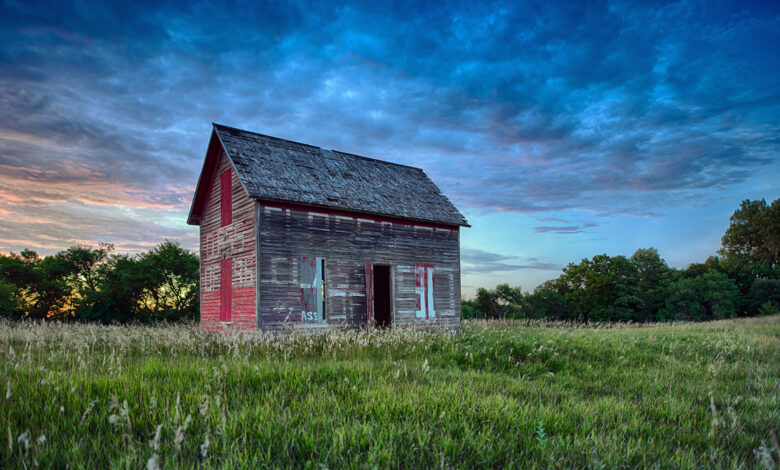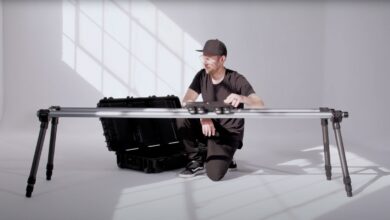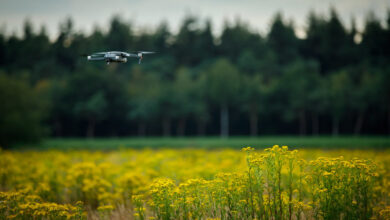Depth of Field: More Than Just Aperture

When you think about controlling depth of field, aperture probably immediately comes to mind. In its simplest form, this is true. However, other factors also affect depth of field. Knowing these different factors will help you understand and control your depth of field.
Adjusting the elements of aperture, distance to subject, focal length, and how they affect depth of field will help you master this important skill in creating stunning photos, whether portraits or landscapes.
 What is depth of field?
What is depth of field?
First, you need to understand depth of field. In its simplest form, depth of field is the distance between the nearest and farthest objects that are acceptably sharp in a photo. Easy, right?
Aperture vs F-Stop
Let’s say you’ve ever had a conversation with another photographer or anyone interested in photography. In that case, you’ll hear them talk about aperture and f-stop and most likely interchange the two in conversation. I fell into this trap too when explaining about depth of field and that there is a difference. What is the difference?
Aperture is the adjustable opening in a lens, and its size is measured in f-stop numbers. Now that we know the difference between aperture and f-stop, we can explore what you can achieve with different f-stops. Knowing that f-stop is the size of the lens’s aperture will help us better understand the difference between shallow depth of field and deep depth of field.
Shallow depth of field vs deep depth of field.
You may have heard the terms shallow depth of field and deep depth of field. What do they mean and how do we achieve these results? Shallow depth of field has a blurred background, and deep depth of field has everything in focus, from the foreground to the background of your image.
Achieve shallow depth of field and deep depth of field
Everyone wants a nice blurred background in their portraits or macro shots. To achieve these results, you’ll need a lens with a small f-stop (large aperture) between f/1.4 and f/5.6. Using a small f-stop number will do two things. First, you’ll achieve a blurred background or bokeh effect in your photo, separating your subject from the background. Second, it will allow more light to pass through the lens to your camera’s sensor. We’re constantly trying to achieve a shallow depth of field and forget to try to achieve a deep depth of field in our photos. You’ll want to choose an f-stop of f/5.6 or higher, which will allow for a larger depth of field (small aperture) and more of the image to be in focus. You’ll typically choose a deep depth of field for landscape photos or when you want more of the background to be in focus.
Precise focus
Achieving precise focus is important when it comes to depth of field. When focusing, you want to focus on your subject. This will ensure that your subject is in focus, and your f-stop choice will determine how much of your subject is in focus.
Distance from subject to camera
The closer the subject is to your camera, the shallower the depth of field will be. If you move the camera further away from the subject, you will get a deeper depth of field. This still happens when the aperture is kept the same. I have been asked why their backgrounds are not blurred, but I use a aperture 2.8. The first question I ask is, “How far away is your subject from the background?” The usual answer is, “Just a few feet.” Another thing to remember is that the closer your subject is to the background, the less blurry your background will be. I like to keep my subject at least 6 feet away from the background when shooting portraits, if possible.
 Focal length of the lens
Focal length of the lens
Even the focal length of your lens will affect your depth of field. If you choose a 200mm lens, you can get some serious bokeh (blur) action. When shooting portraits, I like to use 70-200f/2.8 to create a shallow depth of field. If we jump to the other end and choose a focal length 14mm on a wide angle lensThis will produce sharp images from foreground to background, even at f/3.5. You may need f/16 to achieve the same depth of field.

Sometimes I’m out in the field and I like a super shallow depth of field for a flower. I’ll use Nikkor Z 70-200mm f/2.8 Lensuse the lens focal length at 200mm, then get as close as the lens can focus or the lens minimum focusing distance (3.28 ft). This will allow me to achieve an extremely shallow depth of field because I am moving close to the subject and using the 200mm focal length.
Choose the right F-Stop
I often get asked, “What aperture do I need?” My answer is always, It depends. The first thing I think about is what I want to achieve in the photo I’m creating. Here are some things I consider when choosing your f-stop.
Subject
Consider your subject. If you are shooting portraits, you can use a lower f-stop (e.g. f/1.8) to create a nice bokeh effect in the background. This will separate your subject from the background. If you are a natural light photographer, you can place your subject in your preferred lighting. The background in that location may not be flattering, so you can blur the background to make the distracting background more aesthetically pleasing. It will also help your subject stand out! If you are shooting landscapes, you may want to use a larger f-stop (e.g. f/16) to increase the depth of field. This will bring more of the foreground into focus.
Light
Sometimes you may find yourself in a low light situation and need more light to enter the lens. This will allow you to achieve a faster shutter speed when combined with ISO. Otherwise, the image may be too bright (overexposed) and using an f-stop like f/16 will reduce the amount of light entering the camera.
Creative effects
There is no right or wrong answer when it comes to choosing an aperture. Is there a best choice? Yes! You’ve heard the old saying, think outside the box. I tell my students to think like there is no box. The reason is because if our boxes are still there, we tend to fall back into boxes, limiting our thought process by keeping an open mind. This will allow us to go back to the old way! Experiment and see what different combinations of apertures can do for your photos!
Conclusion
Ultimately, knowing that depth of field is affected by more than just the aperture of your lens. Once you know your focal length, the distance to your subject also plays a big role in the results of your images. You can start making informed decisions when taking photos, which will save you frustration. When you know how to diagnose a problem, you know how to fix it. Depth of field doesn’t have to be a difficult problem, and ultimately, if you keep a few things in mind, depth of field is another thing you can quickly master!






